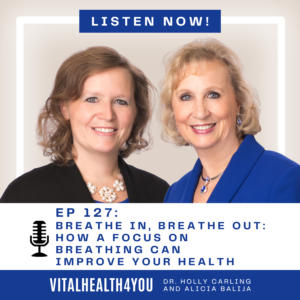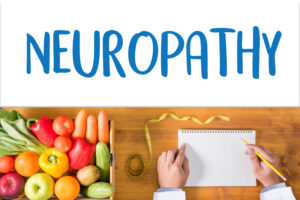Part I
Today’s children are in a crisis! In this two part series we will discuss several problems gaining momentum with our children that, when we are educated, can have a great influence to change.
There are more industries targeting children now, than anytime in our history. Through the media they are targeted by the toy and game industries, the dairy industry, the fast food industry and even the alcohol and cigarette industries. These companies know that if they can hook the children, they have them for life. And they’re right. But the industry that is targeting children that sickens me the most is the pharmaceutical companies. In two particular areas: antidepressants and attitude control.
There are 2 particular areas they are targeting: Via psychiatrists (depression, suicide, ADHD, anxiety) and via Medical Doctors (diabetes, obesity). The pharmaceutical industry wants 52 million children on psychotropic drugs within the next few years. They are heavily campaigning to that end. With drug companies targeting kids now, these kids are in trouble! But not in the way you would expect.
In order to fuel antidepressant and other psychotropic drug sales, children are being diagnosed with “chemical imbalances” despite the fact that no test exists to support such a claim and there is no real conception of what a correct chemical balance looks like. These conditions are simply theories. It turns out that ADHD and many other such disorders were simply voted into existence by American Psychiatric Association members into their Diagnostic and Statistical Manual of Mental Disorders. Within a year of that, 500,000 children in America alone were diagnosed with it. Today, 17 million schoolchildren worldwide have now been diagnosed with so-called mental disorders and prescribed cocaine-like stimulants and powerful antidepressants as treatment.
If you know of a child who seems unruly, you may ask “So, what’s wrong with kids being placed on these drugs?” I’d answer “A lot”. ADHD is not like a medical condition such as diabetes, and Ritalin is not like insulin. Diabetes is a real medical condition that can be objectively diagnosed. ADHD is an invented label with no objective valid means of diagnosis, according to Mary Ann Block, author of “No More ADHD”. Teachers, with no medical training are “diagnosing” these kids and suggesting parents put their child on Ritalin or other psychotropic drugs. The problem is in some states, if the parent refuses to put their kids on drugs they are charged with medical neglect & child abuse. Schools are forced to not admit the child unless they submit to being drugged when told to do so by person of school “authority”. Fortunately, the State of Florida just made that illegal, but other states are not overturning that ruling. Teachers, who have long had their hands tied with regards to discipline, love this because it is finally a means of control. But it is quickly getting out of control!
What more wrong can happen? Most states are now adopting a mandatory psychological screening that applies to any child entering a public school system. The questions on that screening are upsetting. Here are some of the questions being used to decide whether or not a child should be on psychotropic drugs: “During the past month, how much of a problem have you had with feeling unhappy or sad?” “In the past month, how much of a problem have you had with losing your temper, being in a bad mood, or little things making you mad or upset?” “Has there been a time when you had less energy than you usually do?” “Has there been a time when nothing was fun for you and you just weren’t interested in anything?” “Has there been a time when you felt you couldn’t do anything well or that you weren’t as good-looking or as smart as other people?” These questions, if answered “yes” means your child could be put on psychotropic drugs. Don’t these questions comprise at least 95% of society? To be fair, there are other questions regarding cigarette, alcohol or marijuana use as well as suicidal tendencies, but the majority of the questions are like the ones quoted above. This program is funded by AdvoCare and Eli Lilly as well as a few other pharmaceutical giants and is marketed to state officials and funded as “educational grants”. Sounds like a conflict of interest to me! For the rest of this survey see www.cchr.org.
What burns me about all of this is that there are so many alternatives! Most of these kids are never properly diagnosed. According to medical experts, hyperactive and other “asocial” behaviors have many sources ranging from, but not limited to, allergies, food additives (dyes, preservatives) environmental toxins, mineral deficiencies, deficiencies in essential fatty acids, deficiencies in certain amino acids, improper sleep, sensory overload, sensory integration issues, visual deficits, hearing deficits….the list goes on. Why are these not being explored and handling the REASON WHY the condition exists, rather than just drugging our children? These also apply to depression, anxiety, obsessive compulsive disorders and others. If a child is not learning or cannot concentrate, a competent tutor may be all that’s needed. Many children who are highly intelligent or very creative, struggle because they are in need of greater stimulation. Children who are simply “smart” are bored to tears. According to Dr. Sydney Walker, author of The Hyperactivity Hoax , and Dr. Bunni Tobias, author of ADHD Look-Alikes, children who are bored will flit, fidget, squirm, scratch, stretch and (especially if they are boys) start looking for ways to get into trouble. This is normal behavior! Not reason to put dangerous drugs into our children.
There are multiple problems with the direction we are going. Next weeks’ article will cover the hazards of drugging our children, what Ritalin does to the brain, the next topics that are putting our children in crisis – obesity and diabetes and what to do about it all. Until then, have hope – there is more that you can do for your children!
Part II
In last weeks’ article we discussed the pharmaceutical industries goal of drugging 52 million of our children and how they’re going about it. In this second part, in addition to continuing the problem with this, we will also discuss other areas where our children are in crisis.
The hazards of drugging our children are playing havoc in our society. We are seeing a dramatic increase in socio-pathic displays of emotions. Most are attributed to medications used to “control” these “undesirable” behaviors. In fact, 80% of the children involved in the Columbine School shootings were on prescribed psychotropic drugs. The other 20% have “closed files” and it is unknown whether or not they were on drugs too. This is true of most of the shooting rampages in schools and work places.
Some of the effects of Ritalin alone are frightening. According to the National Institutes for Health, there is an urgent need to research the long term effects of treatment with Ritalin. According to Peter R. Breggin, M.D. there are several dangerous effects of Ritalin: “decreased blood flow to the brain, an effect recently shown to be caused by cocaine where it is associated with impaired thinking ability and memory loss; disruption of growth hormone, leading to suppression of growth in the body and brain of the child; permanent neurological tics, including Tourette’s Syndrome; addiction and abuse, including withdrawal reactions on a daily basis; psychosis (mania), depression, insomnia, agitation, and social withdrawal; possible shrinkage (atrophy) or other permanent physical abnormalities in the brain; worsening of the very symptoms the drug is supposed to improve including hyperactivity and inattention; decreased ability to learn.” According to the U.S. Drug Enforcement Agency, “Ritalin is considered a Class II Drug and a controlled substance, a fact not widely known. Other drugs in this category are those such as cocaine, methamphetamine and methadone. A drug becomes a controlled substance when it has the potential for abuse and for addiction. It is not uncommon in many classrooms today to find the percentage of children on Ritalin to be 25% or greater and the numbers are climbing.” If this isn’t frightening enough, let’s look at the other things putting our kids in a state of crisis:
Obesity is not a new problem overall, however, in children it is relatively new. Obesity in the United States has grown from 13% of the population in 1962 to 31% in 2000. 63% have a Body Mass Index in excess of 25.0 (overweight) and 31% exceed 30.0 (obese). Childhood obesity has more than tripled in the past 20 years.
Related to this is diabetes. More and more children are being diagnosed with Type II Diabetes. This type is typically referred to as “adult-onset” or “acquired” diabetes. This type is diet related and for a predominance of time typically only occurred after age 40 – after many years of dietary abuses. Now children are succumbing to it as well. The incidence in children has climbed from 1-2% of children to 8-45% (depending on sources of information). Even 8% is quadrupling the past statistics. About 85% of children diagnosed with Type II Diabetes are obese.
So why this trend, and what can we do about it?
According to the American Journal of Clinical Nutrition, the consumption of high fructose corn syrup (HFCS) increased 1000% between 1970 and 1990, far exceeding the changes in intake of any other food or food group. Likewise, there has been a concurrent rise in obesity during this time, leading scientists and nutritionists to see a connection between HFCS and weight gain. Soda consumption among teenage girls has doubled and among teenage boys has tripled since 1978. Another startling statistic is that one fifth of all infants ages one and two are now soda drinkers!
However, we can’t blame only sugar. Too little physical activity and too much bad fats – fried foods, margarine and hydrogenated fats cause many problems in children. Too little good fats are also to blame. Essential fatty acid deficiencies interfere with the body’s receptivity to insulin and are part of the material components the body uses to make insulin. Bad fats cause you to gain weight, good fats support weight loss.
Another issue is school lunches. 95% of all school lunches today come from a federally assisted meal program. This program provides food that is pre-packaged, only requiring warming. It is laden with hydrogenated fats, HFCS, dyes, preservatives, synthetic vitamins and many ingredients that are contributing to the physical and mental ill-health of children. Long gone are the on-site cooked meals that provided some semblance of nutrition. We need to be demanding a better quality lunch than the “empty calorie” choices that children have gotten used to today. On the website www.sustainabletable.org, “With the demise of fresh, balanced meals prepared on campus has come the rise of junk food as a main course. In order to compensate for a lack of government funding, school systems around the country have turned to junk food and junk food advertising – mainly for sodas and fast food chains. An area that was once reserved for learning has opened up as a market for large junk food manufacturers to peddle their products in vending machines and in the form of school sponsorships. As Senator Tom Harkin (D-Iowa) put it, in his opening remarks to a convention of government health officials and big food industry representatives, “corporate America spends $12 billion a year on food ads to kids because it works.”
After much persuasion by concerned parents regarding these issues, many responsible states are rising to the occasion and creating healthier programs. These programs include organic fruit and vegetables, chicken wraps, garden pizza, organic salad bars, etc. Washington is one of these states. Several other states are following suit. The amazing thing is that they are finding children are better behaved, their weight is beginning to normalize and they are finding it is costing the schools about 2 cents per meal less!
So what can we do about our children in crisis? Start feeding them real food. Good old-fashioned steamed vegetables and organic meats, cutting out the sodas and other sugars, hydrogenated fats, and fast food. Make sure their diets contain lots of minerals and essential fatty acids which have been shown to be effective with behavioral issues. Make sure your child is properly diagnosed and not just labeled (i.e. ADHD). Get active with your school lunch programs. Visit resources such as www.sustainabletable.org/features/backtoschool for more information on what you can do to improve school lunches. Quality foods in the schools as well as at home will go far in reducing childhood obesity and behavioral issues. And see a good physician skilled in handling these mental and health issues with kids naturally without drugging them.
©2005 Holly A. Carling, O.M.D., L.Ac., Ph.D.







